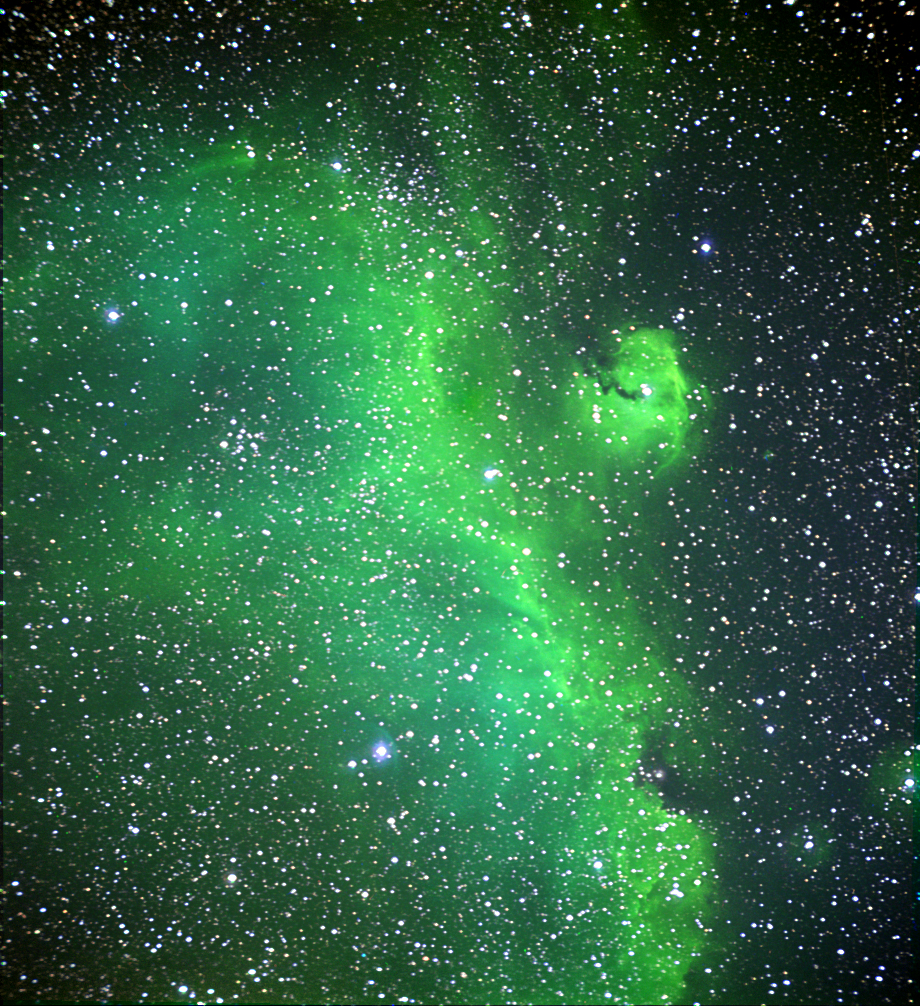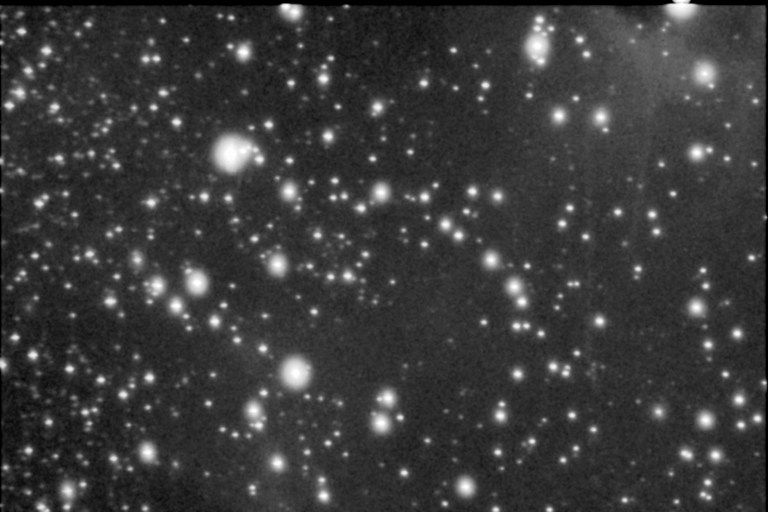
5 minutes exposure, Meade 416XT CCD.
5" f/5 refractor at prime focus.

IC 2177 is a large but faint emission nebula on the Monoceros/Canis Major border, about 7 degrees north-east of Sirius, and about 2 degrees south of the open cluster, M50, which is visible in the photograph as a bright, compact group of stars about the nebula. The Seagull name comes from the shape of the main portion of the nebulosity, which does look something like a seagull in flight. Unfortunately the nebula is very large and so only a very small portion is visible in this image, even though faint nebulosity pervades almost the entire image.
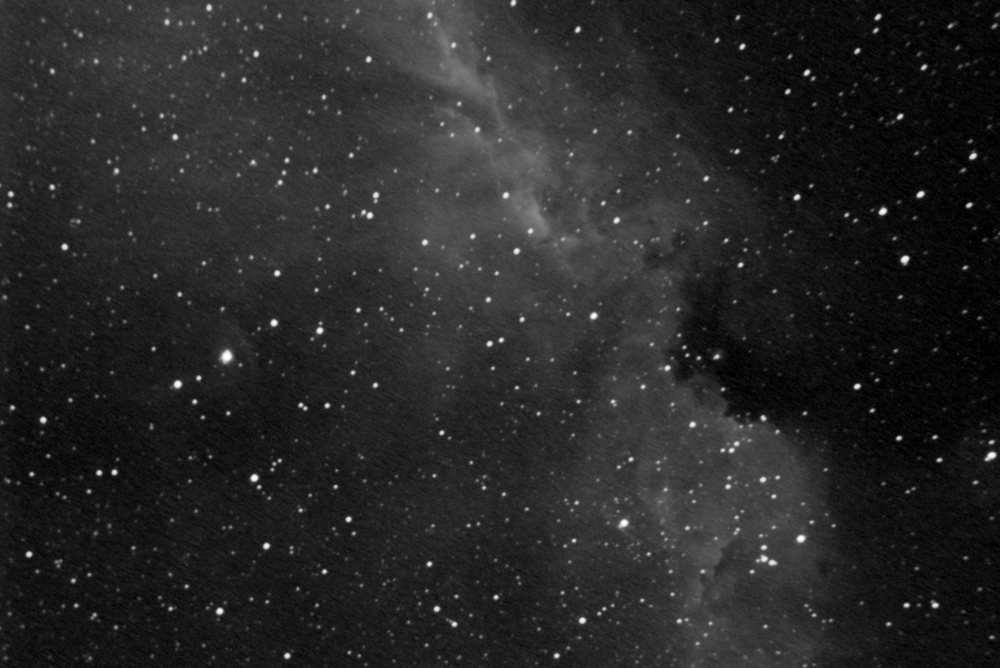
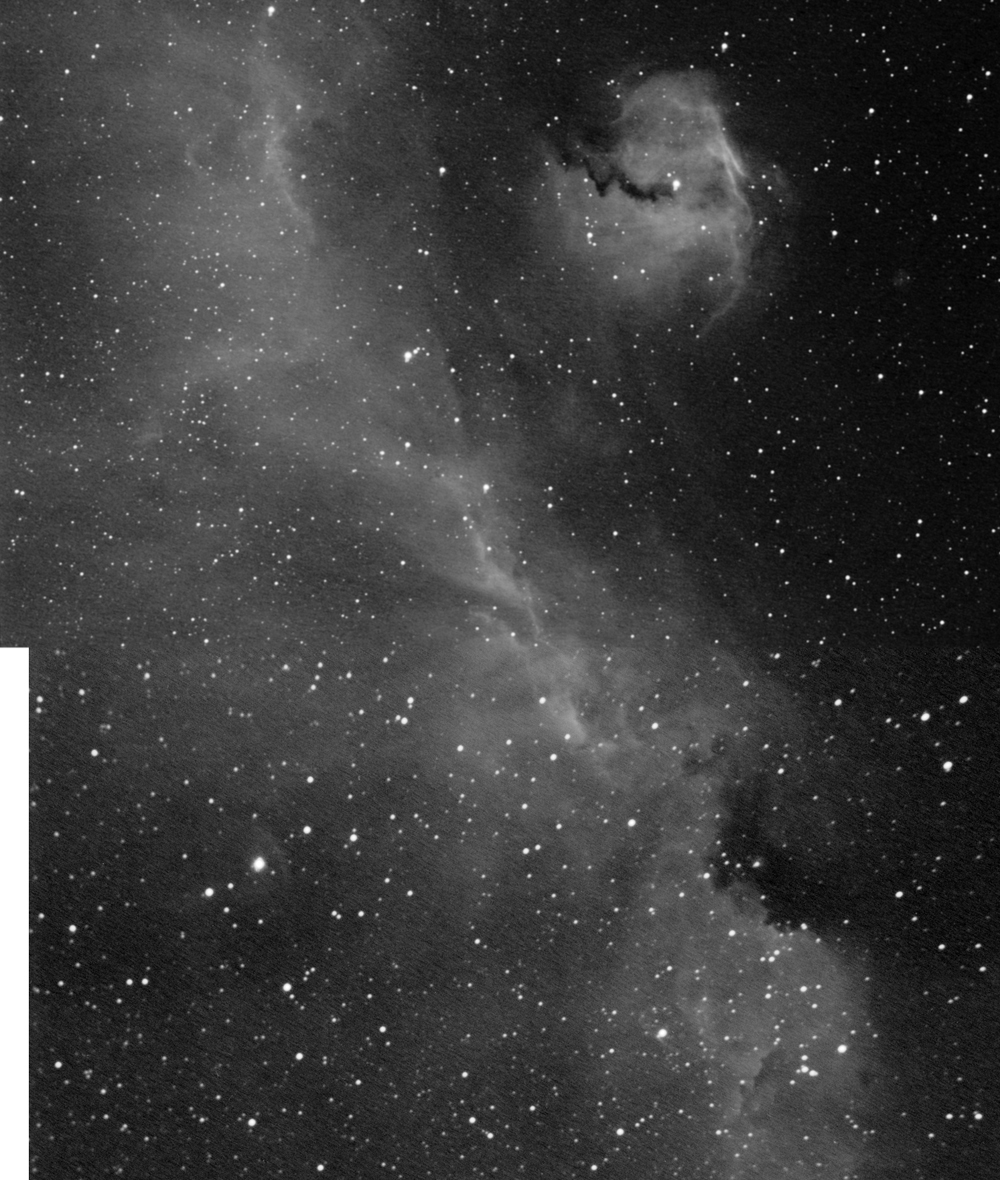
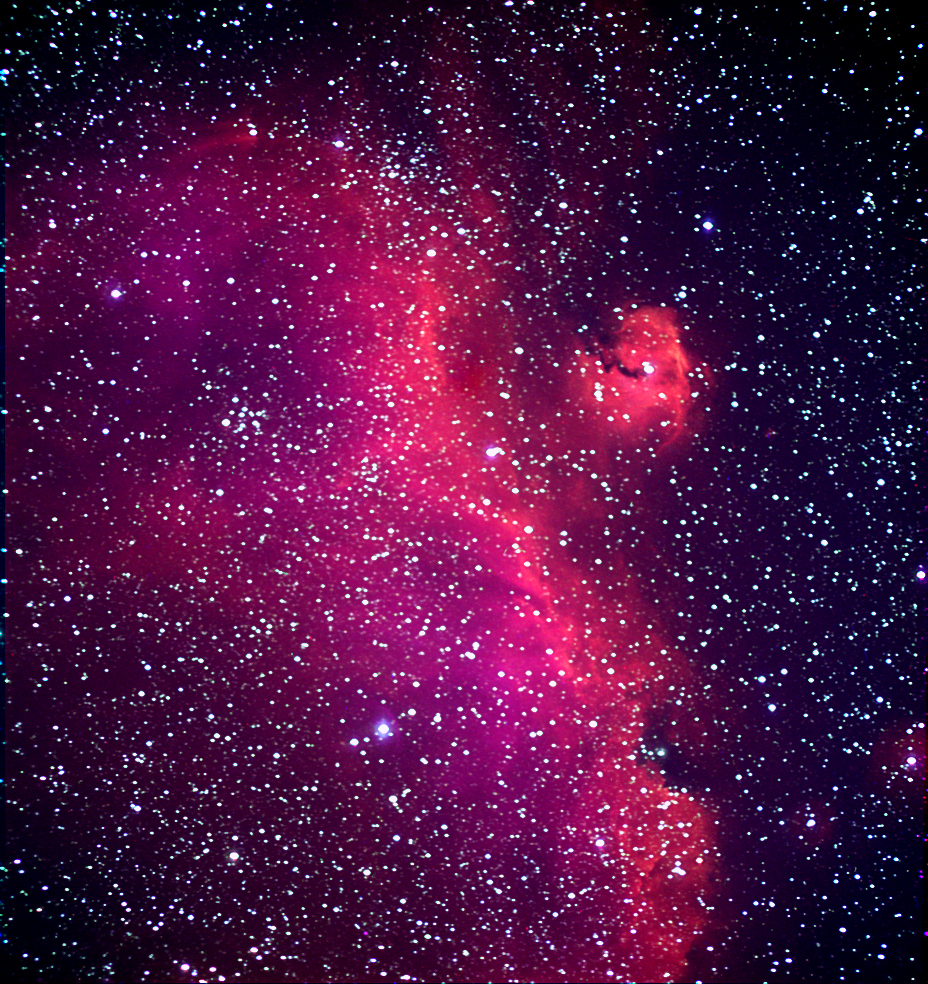
The above image was processed using the H-alpha images as the red channel. This is the preferred palette of the European Southern Observatory. The HST observers prefer to use the SII images as the red channel since the SII line is at a slightly longer wavelength than the H-alpha line. This results in a more green-dominated image as shown below.
